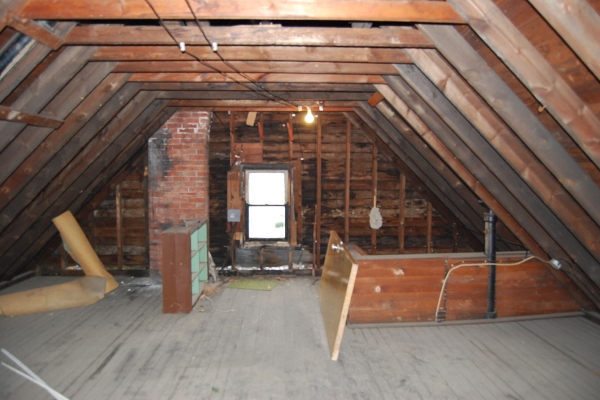It sounds like a huge and unnecessary burden to have proper attic ventilation for your home. However, it’s an important procedure for any homeowner who intends to prolong the lifespan and performance of their roofs.
Good airflow in your attic prevents ice dams from forming on your roofs. This happens when cold weather creates ice formations on roofing materials while heated air increases the internal roof temperature. In turn, it creates massive snowmelt, which will drench and hugely damage your roof. Ice dam protection isn’t the only protection you receive from proper attic ventilation. GAF has an excellent list of attic ventilation benefits you should know.
Why Should You Have Proper Attic Ventilation?
Properly installing a roof involves much more than putting on the shingles. Whether it’s in warm or cold climates, proper attic ventilation plays a key role in helping to make the roof system last longer and prevent many expensive issues from occurring inside and out of a building. Contractors should explain to homeowners why proper attic ventilation is so important with the benefits below. It serves two key functions:
- Allows cool, fresh air to enter the attic at the eave or soffit areas of the roof
- Exhausts hot, moist air from the attic by way of the ridge or other exhaust vents. This hot, moist air can cause a whole host of issues.
In cold climates, ventilation helps maintain a “cold” roof system by mixing cool outside air with attic air to allow for less snow melting on the roof, therefore avoiding damaging ice damming. In warm climates, proper attic ventilation helps expel hot air, which can contributes to moisture problems. (Read More)
You might think “since attic ventilation is just simple to perform and no materials are needed, can I do it by myself?” If you have prior experience in roofing DIY, you can conduct attic ventilation efficiently. Attic ventilation works by letting external air into your soffit vent, which will flow in the attic airspace and regulate the attic temperature efficiently.
Construction Pro Tips have an excellent step-by-step guide to proper attic ventilation construction, which can greatly work to your advantage.
Constructing Your Very First Attic Ventilation System
It’s all about airflow
Roof ventilation is based on the simple fact that warm air rises. In summer, the sun heats air in the attic. In winter, heat from your home warms attic air. In either season, good venting occurs when cool air can enter the attic near the eaves and exit near the peak. Ideally, half of the vent area should be low and half high. The ultimate goal is that the temperature and humidity levels in the attic space match the conditions outdoors.
Paths to good venting
For intake air, soffit vents are best. Air can passively exit through ridge vents or hood vents. Turbine vents harness the wind to suck air out of the attic. Electric-powered vents are the ultimate air movers but aren’t necessary in most situations. Gable vents can help by allowing air in or out, but they don’t usually help the air flow evenly throughout the attic.
Bad ventilation, big problems
Moisture damage
At this point, you’re definitely wondering how much will an attic ventilation project cost. Figures show that it isn’t quite as expensive as a roof installation or replacement. You’ll only need to purchase roof vents and equipment. Most of attic ventilation depends on the ventilation design efficiency.
Roof ventilation isn’t just to help you prevent ice dam water damage. It works in preserving your roof during warmer temperatures too. If you want an accurate market-based price calculation, check out Home Advisor’s post below.
Average Costs to Install Attic Ventilation
Installing a roof vent costs between $300-$650 on average, including labor and materials. Exact rates depend on the type, size, and number of units you choose to install. Ridge vents cost $2 to $3 per linear foot. Roof vents come in a variety of styles and range from $10 to $500 each.
Ridge models run the length of a roof’s peak and allow warm, moist air to escape. Soffit vents run along the underside of eaves and enhance airflow by allowing it to enter from outside. Roof and gable versions provide a single point of exit and entry for air. The best system is a combination of ridge and soffit units. However, any airflow is better than none.
No matter what you’ve heard, roof ventilation is not just for warmer climates. It extends the life of your roof by reducing condensation that can cause structural damage. Since a new roof is one of the most expensive projects a homeowner can undertake, ventilation is a necessary and sound investment. Remember, your attic must be airtight for proper airflow, and there may be an additional cost to seal your roof. To achieve adequate airflow, consult a professional roofing contractor. In most cases, a homeowner does not possess the expertise to do this work him/herself.
Ridge Vent Cost Per Foot
Expect to pay $2 to $3 per foot for ridge venting, not including installation. They sell in 4-foot sections for $8 to $12 per section. The average home with a peaked roof will require 40 to 50 feet of material for a total cost of $80 to $150. You will also need connector plugs and straps at $5 to $6 each to adjoin pieces. Estimate $10 to $15 per 5-lb. bag of roofing nails and $20 to $30 per 200 to 300 specialty roofing screws with neoprene washers that create a seal. Homes with flat roofs or other designs without ridges will require another type of ventilation. (continued)
Execution might not be the major player in attic ventilation projects, but you might have insufficient time to do the project DIY. In this light, it pays to work with the best attic ventilation service in Clinton Township. Miller’s Home Improvement has been serving properties across Clinton Township for decades. Call us today to get started on your project!




